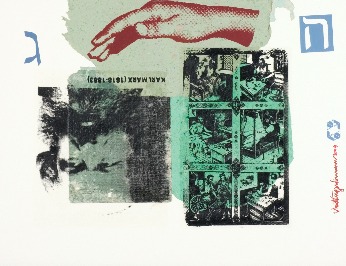Anne Frank and Michel Laub: The Daily and Daily Violence
DOI:
https://doi.org/10.17851/1982-3053.13.24.55-73Keywords:
Shoah, Diaries, AutofictionAbstract
The Diary of a Young Girl (1947), also known as The Diary of Anne Frank, is one of the most interesting reports of the Shoah. Elaborated from the manuscripts of a German Jewish adolescent refugee in Holland, during a Nazi persecution, the book is a great reference for world literature, especially for the Literature of Testimony. Diário da queda (2011), the autobiographical novel by the Brazilian writer Michel Laub, revolves around three generations of a Jewish family: the narrator's grandfather, driven by the experience of having been arrested in Auschwitz; the narrator's father, who carries the bitter memories of his father's suicide when he was only fourteen years old; and the son, the narrator, who carries with him the guilt of having purposely caused an accident that injured a classmate and its consequences, when he was a teenager. The Literary Diary as a genre, here in debate, emerged from a monologue text whose creation was the only reader, and it has a bit of communicative and literary characters, elements that are not anymore considered. From this genre emerges the notion of Autofiction, or even self-writing (fictions about the self), such as memories, diaries, reports, autobiographies, fictions about the self, a true autobiographical constellation, a bivalent, ambiguous, androgynous genre in which the author questions reality and himself, that it is the full in its essence, but a construction that operates within and out of the fictional text in the same life. Two Diaries, Two Children, fictions about the Holocaust: from the comparison of the these two works in diary format and their positioning of their approaches and distances, we intend to observe the change of texts, the observation of the Shoah by the child: one who lived the persecutions and related hers daily events, and the one who receive the inheritance of destroy, of the shattered family.
Downloads
References
FELMAN, Shoshana. À l’âge du témoignage: Shoah de Claude Lanzmann. In: DEGUY, Michel (Org.). Au sujet de Shoah: le filme de Claude Lanzmann. Paris: Belin, 2011.
GAGNEBIN, Jeanne-Marie. Lembrar escrever esquecer. São Paulo: Editora 34, 2006.
HEILBRUN, Carolyn; WEIMER, Joan. Is biography fiction? Soundings: an interdisciplinary journal, v. 76, n. 2/3, Summer/Fall, 1993. Papers from The Drew Symposium.
HIRSCH, Marianne. The generation of postmemory: writing and visual culture after the Holocaust. New York: Columbia University Press, 2012.
HIRSCH, Marianne; KACANDES, Irene (Org.). Teaching the representation of the Holocaust. New York: Modern Language Association of America, 2004.
HUBIER, Sébastien. Littératures intimes: les expressions du moi, de l’autobiographie à l’autoficition. Paris: Armand Colin, 2003.
KLINGER, Diana. Escritas de si, escritas do outro: o retorno do autor e a virada etnográfica. Rio de Janeiro: 7Letras, 2007.
LEJEUNE, Philippe. Le pacte autobiographique. Paris : Seuil, 1975.
LEVI, Primo. É isto um homem? Trad. Luigi del Re. Rio de Janeiro: Rocco, 1988.
LEVI, Primo. Os afogados e os sobreviventes. Trad. Luis Sérgio Henriques. São Paulo: Paz e Terra, 2004.
PEDROSA, Célia et alli (Org.). Indicionário do contemporâneo. Belo Horizonte: Editora UFMG, 2018.
SELIGMANN-SILVA, Márcio. A literatura do trauma. Literatura de testemunho. Dossiê. Revista Cult, São Paulo, jun. 1999.
Downloads
Published
How to Cite
Issue
Section
License
Os direitos autorais pertencem exclusivamente aos autores. Os direitos de licenciamento utilizados pelo periódico é a licença Creative Commons Attribution 4.0 (CC BY 4.0): são permitidos o compartilhamento (cópia e distribuição do material em qualquer meio ou formato) e adaptação (remix, transformação e criação de material a partir do conteúdo assim licenciado para quaisquer fins, inclusive comerciais.






